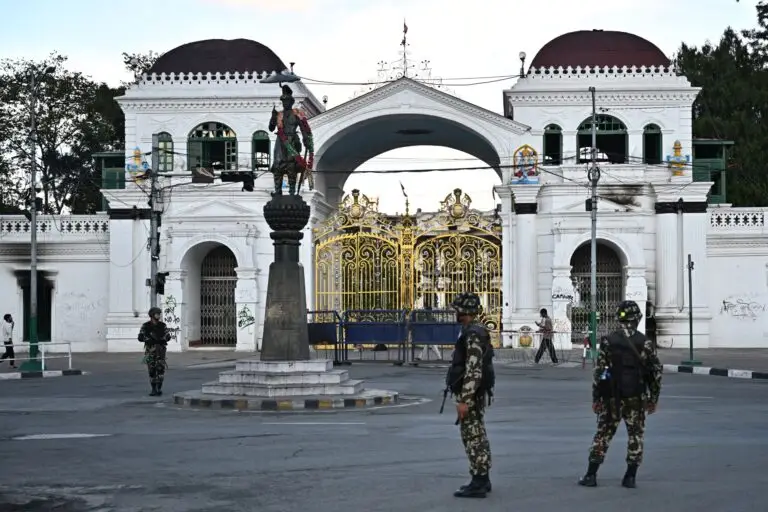KATHMANDU, NEPAL — A new generation has erupted onto Nepal’s political stage, triggering the most volatile chapter in the country’s recent history. What began as discontent over a social media ban has mushroomed into a sweeping uprising that toppled a prime minister, engulfed the parliament in flames, and shattered the illusion of stability in the Himalayan republic.
Now, with over a dozen cities scarred by arson and rebellion, and more than 13,000 prisoners having vanished into the mountains following mass jailbreaks, Nepal faces not just a political crisis—but a full-scale breakdown in national order.
A Nation Unravels
The resignation of Prime Minister KP Sharma Oli earlier this week—under pressure and after his residence was torched—left a leadership void that no one seems prepared to fill. The octogenarian President Ramchandra Paudel remains in office, but his mandate and authority hang by a thread. His own office was set ablaze amid the chaos, a symbol of the people’s fury toward the entrenched political elite.
Streets once bustling with commerce have quieted under curfew, replaced by the sound of military boots and armored vehicles. Troops now stand where shopkeepers once sold wares. At least 19 civilians have died since the unrest began.
Yet, this is not merely civil unrest—it’s a generational reckoning.
Generation Z Steps Forward
At the heart of the movement lies an unlikely coalition: Gen Z protesters, largely leaderless and decentralized, yet fiercely unified in purpose. Their message is blunt: the old system must go.
“No recycled politicians,” declared Sudan Gurung, one of the youth voices emerging from the smoke of Kathmandu’s protests. “We want structure, not positions.”
They don’t seek cabinet seats or titles—they seek legitimacy, reform, and the complete overhaul of what they describe as a failed republic run by men disconnected from the country’s realities. Their rallying cry: “Don’t lead us—rebuild with us.”
What makes this revolt distinct is not just its spontaneity or scale, but its clarity. Amid Nepal’s 21% youth unemployment rate and a stagnant economy, the youth are not merely angry—they’re organized, digitally fluent, and ideologically bold.
The Search for Neutral Ground
With most senior politicians missing from the public eye, attention has shifted to non-partisan figures to steer the nation through its turbulence. Former Chief Justice Sushila Karki has emerged as a favorite to lead an interim technocratic government. Her judicial record, coupled with her perceived incorruptibility, has earned her cautious approval among activists and even army negotiators.
Other figures floated include Kathmandu’s youthful mayor, Balendra Shah, a former rapper and civil engineer who has already signaled his support for Karki, stating that her leadership could guide the country into new elections with credibility.
But unity within the protest movement is tenuous. “This isn’t a party. It’s an awakening,” said activist Rakshya Bam. “And awakenings are messy.”
What Comes Next?
Nepal now stands at an inflection point.
With tens of thousands demanding the dissolution of parliament and a new constitution, and with institutions either burned or abandoned, the question is no longer if the system will change—but how fast and under whose watch.
The army, which once served as a stabilizing force in times of crisis, now plays mediator between an enraged populace and a silent political class. Behind closed doors, military brass are reportedly holding parallel talks with protest representatives and civil society leaders.
One thing is clear: the status quo has collapsed.
Whether what follows is reform or rupture now depends on how seriously the ruling remnants heed the call of a generation no longer willing to wait.






